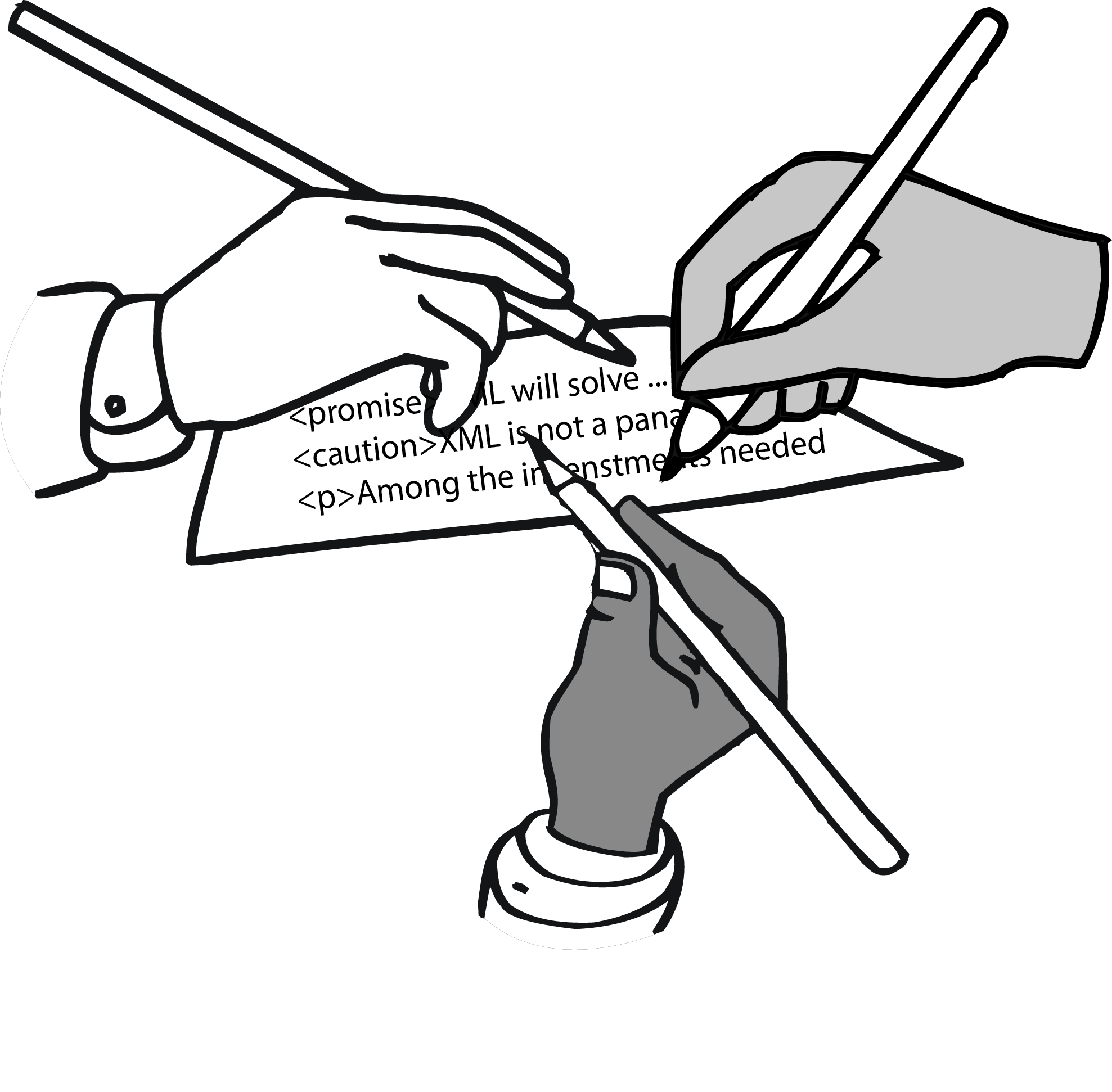| Balisage |
| Announcement List |
|
||
The problemSome XML projects succeed. Others fail owing to technical problems or because XML is not really the right solution for the technical problem they are trying to address. Others achieve their technical goals but are perceived as failures because they fail to meet the expectations with which they were launched. How can those who plan, prepare, and execute XML projects make clear to decision makers what can reasonably be expected from an XML project, and what should not be expected? How can XML experts help ensure that XML is deployed where appropriate and, equally important, help ensure that that it not deployed where it will not help solve the central problem, and might then be blamed for the project’s failure? Adopting XML will not in itself improve the quality of technical writing. (If it forces the tech writers into unfamiliar editing tools, it may even hurt.) Adopting DITA to gain textual reuse may not succeed unless the writing style and textual structure changes to create more internally coherent reusable topics. Tagging a structure as a paragraph does not magically enable the automatic extraction of the semantic information within that paragraph. Markup experts know that. How can we best make responsible decision makers aware of it, without sounding so pessimistic that even reasonable projects are killed as a result? The symposiumThis limited-participation Symposium will gather a select group of experienced specialists in documentation and markup to work together to develop a manifesto on appropriate expectations for the use of XML in document-oriented applications. The documentThe Symposium’s goal is to outline the contents of a white paper for decision makers which encourages the appropriate adoption of XML and helps set appropriate expectations for XML adopters. The target reader of the document is assumed to be intelligent, busy, and in search of a solution to a problem; the audience is not assumed to be interested in or knowledgable about IT or XML. The document should describe what can and cannot be expected in the deployment of XML in organizations responsible for large bodies of natural-language documents. (Similar challenges exist for those deciding whether to apply XML in data-oriented applications, but this symposium focuses on document-oriented problems.) The document should concentrate on setting levels of expectation:
And it should put XML in an overall prespective:
Armed with such a document, XML experts should be able to help their organizations reach more rational decisions about where and how to deploy XML and other technologies, to avoid launching projects based on unrealistic expectations, and to shape realistic expectations for projects that the organization does undertake. The participantsThe ideal participant in the symposium is the line manager, IT staff member, developer, or markup specialist who needs a way to explain XML and its potential to the decision-makers in the organization without giving them inflated and unrealistic expectations, or the outside consultant who needs to explain to prospective clients what they can and cannot expect from a given kind of effort. You may wish to participate in order to gain insights from others, to share your your insights, and/or to influence a product we hope will have both good uptake and long shelf life. The challengeCome roll up your sleeves and create a manifesto that will help managers of new XML textual projects set reasonable expectations and successfully integrate XML into their technology mix! There is nothing so practical as a good theory |
